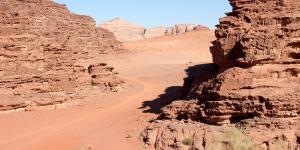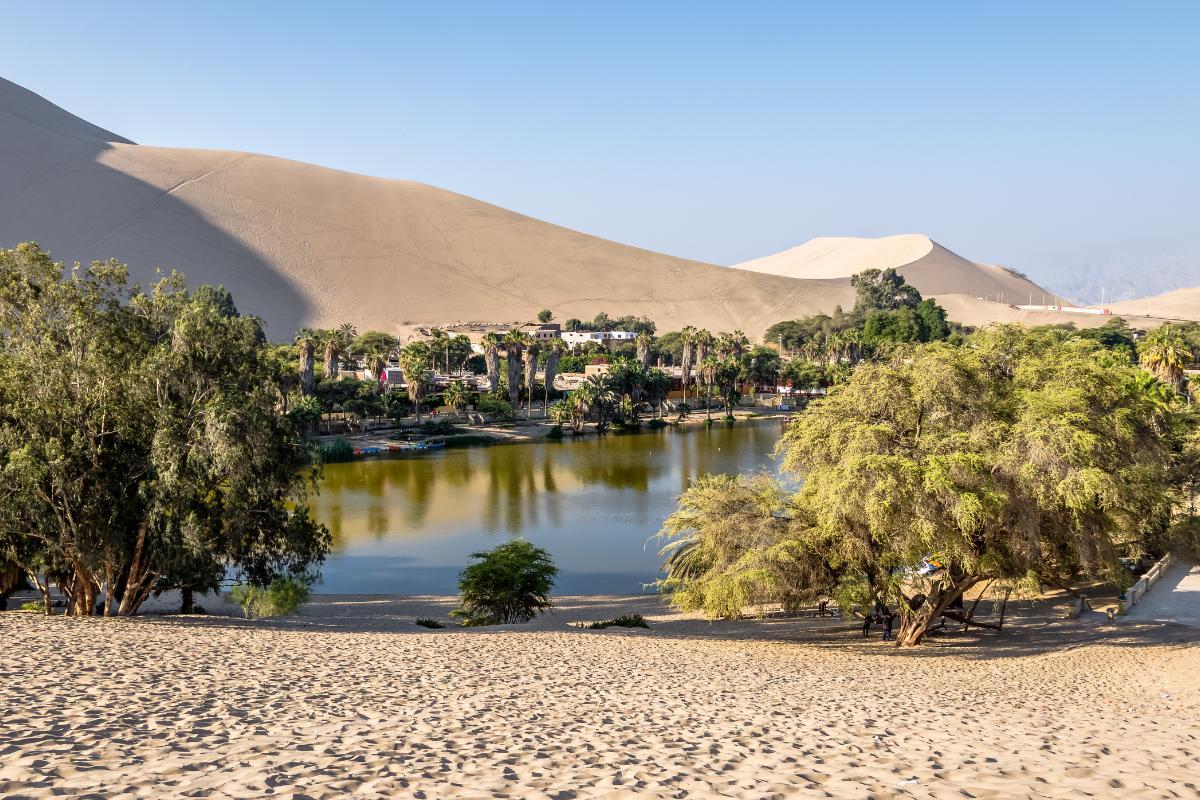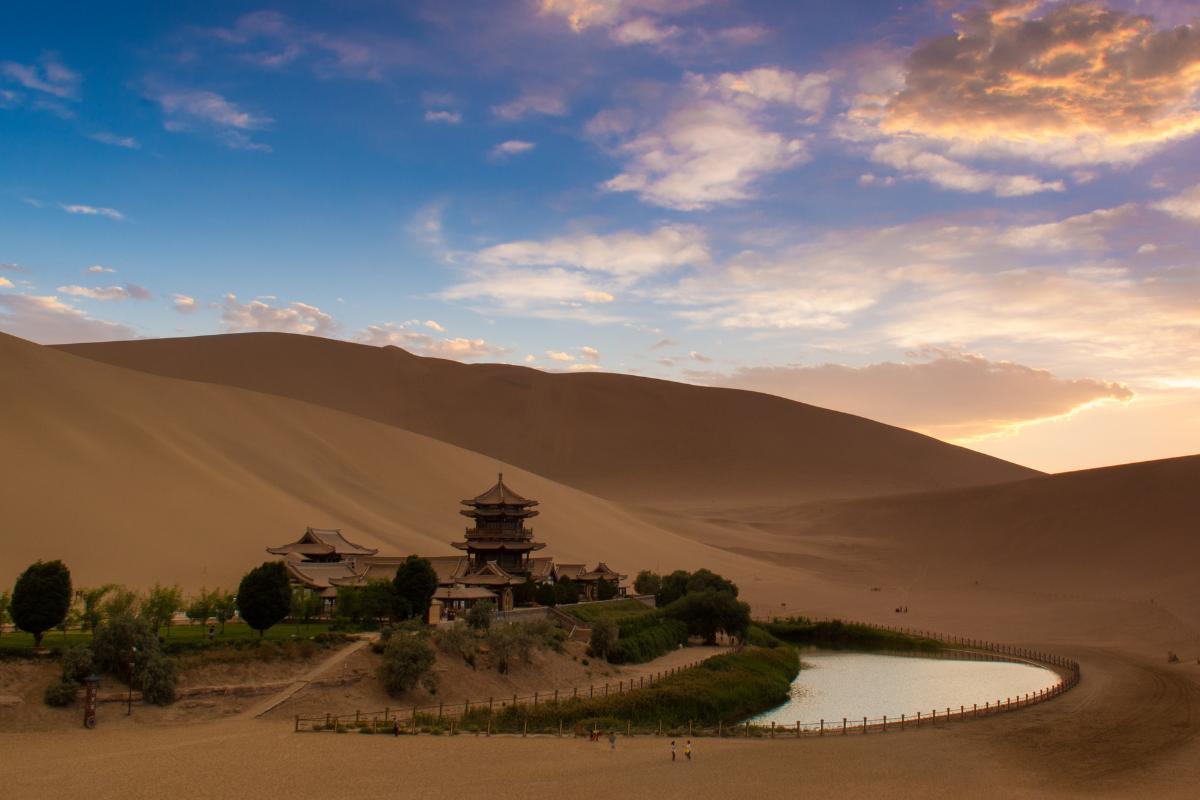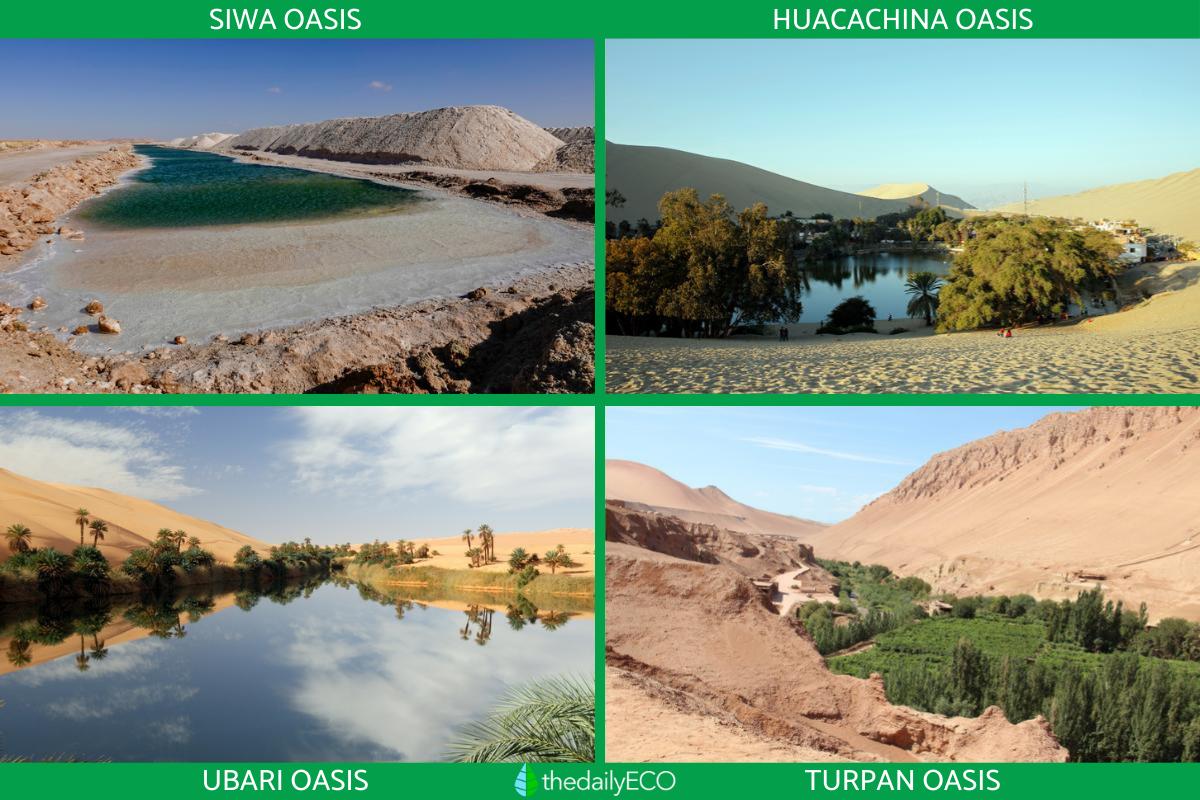What Is an Oasis in a Desert?

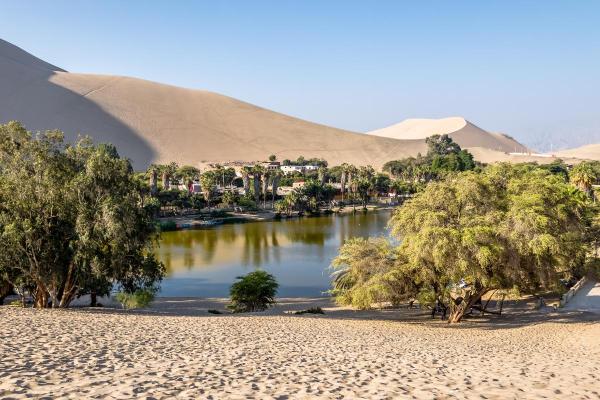
An oasis is a fertile area with water that is located in the middle of a desert or a similarly arid region. Its formation is dependent on underground water sources, rivers, fossil waters or human intervention through wells and irrigation systems. Oases have been fundamental for the survival of communities in desert environments, providing essential resources such as water and soils suitable for agriculture. At thedailyECO, we ask what is an oasis in a desert? In addition to explaining how oases are formed, we look at some notable examples of these unique ecosystems.
What is an oasis?
An oasis is a fertile area with water that is located in the middle of a desert or another arid area. These natural formations usually arise thanks to the presence of underground springs or rivers that emerge to the surface. This may occur thanks to naturally a high water table or as a result of human intervention. It is this presence of water that allows the growth of vegetation and life in an environment where dryness normally predominates.
Oases have been essential to the survival of many civilizations throughout history, serving as resting and supply stops for travelers, merchants and communities living in desert regions. It is common to find palm trees, shrubs, and other types of flora adapted to the climate conditions in them.
Learn more about what is the desert climate to better understand the importance of an oasis for the survival of humans in these arid ecosystems.
Types of oasis
In addition to their ecological importance, oases also have great cultural and symbolic value. They represent hope and possible life in the midst of adversity. There are different types of oasis depending on their origin and the conditions that allow their existence. Some of the main types of oasis are:
- Spring oasis: these are formed when groundwater naturally emerges to the surface due to pressure or cracks in the ground. This type of oasis usually remains stable for long periods and allows the growth of a wide variety of vegetation.
- River oases: are created in areas where rivers flow through desert regions, leaving behind deposits of water and fertile soil. They are common in deserts such as the Sahara, where rivers such as the Nile have given rise to the formation of human settlements since ancient times.
- Fossil water oasis: found in places where there are large reserves of water trapped underground for thousands of years. Although they can be exploited through wells and irrigation systems, their water is not easily regenerated, so they can be depleted over time.
- Artificial oases: these are created by humans by drilling wells or building irrigation systems in arid areas. They are mainly used for agriculture and the development of settlements in desert regions.
Whether natural or artificial, oases generally require careful maintenance. This may include the digging of wells or canals to help ensure the water is constantly accessible. Certain plant species may need to be removed as they can take up excessive amounts of water, making it difficult for other flora in the oasis. By nature, oases are very small areas. They take up only a fraction of the space of their surrounding desert area.
The deserts in which oases develop are known as a type of biome. Discover the different types of terrestrial biomes with our related guide.

How is an oasis is formed?
The formation of an oasis occurs when a source of water allows life to exist in an arid environment. Water sources can be either either underground or surface. This process can occur in different ways, depending on the geology and climate of the region:
- In many cases, oases are formed by underground aquifers. When rainwater or snowmelt from mountains seeps underground, it can be stored in deep layers of soil. If the pressure or structure of the ground allows this water to rise to the surface, a natural spring is generated and gives rise to an oasis. If you want to learn more about these natural water reserves, we explain what is an aquifer in our related article.
- Some oases are created in areas where rivers flow through desert regions. Sometimes these rivers are seasonal, meaning they are dry at certain points of the year. They may leave deposits of water at certain points, creating fertile soils and conditions conducive to vegetation. In some deserts such as the Sahara, there are large reserves of underground water called ‘fossil waters’ which accumulated thousands or even millions of years ago when the climate was more humid. Although these reserves are not easily replenished, they can be extracted through wells to create an oasis.
- In certain regions, the terrain forms natural depressions where the underground water table is high enough for water to emerge. These areas can become oases naturally without the need for human intervention.
- Oases are also formed artificially. Humans have dug wells and built irrigation systems to bring water to arid areas, creating artificial oases. This method has been used since ancient times in regions such as the Middle East and North Africa for agriculture and settlement development. Expansion of artificial oasis for agricultural purposes provides potential negative effects on greater ecosystems and their biodiversity[1].
Learn more about how water is stored underground with our guide to the different types of aquifers.

Oasis examples in the world
Since an oasis exists in contrast with very arid or semi-arid areas, they are not found in areas with temperate or cold climates. They only cover a minute 1.35% of the planet’s surface, but they have been essential for the development of various communities and infrastructures[2]. Some of the most important examples of oases in the world are:
Siwa Oasis (Egypt)
Located in the Western Desert of Egypt, near the border with Libya. Siwa is one of the most famous oases in the world. Its existence is due to natural springs that have allowed the development of a community for thousands of years. In addition to its agricultural importance, the oasis is known for the ancient Oracle of Amun, which Alexander the Great consulted during his conquest.
Huacachina Oasis (Peru)
This oasis is located in the Ica Desert in Peru and is one of the few natural oases in the Americas. Its lagoon is fed by groundwater and is surrounded by sand dunes. Today, it is a popular tourist destination for its landscapes and activities such as sandboarding and buggy rides.
Ubari Oasis (Libya)
Located in the Sahara Desert, the Ubari oasis is known for its stunning lakes surrounded by golden dunes. Although the water has a high concentration of salt, the region has been inhabited by nomadic communities who have developed techniques to take advantage of the environment.
Turpan Oasis (China)
Located in the Xinjiang region of northwestern China, this oasis has been a key point on the ancient Silk Road. Its irrigation system is known as karez and allows underground water to be channeled from the nearby mountains to the agricultural area. Turpan is famous for its grape production and for its ancient ruins.
Al-Hasa Oasis (Saudi Arabia)
This is one of the largest oases in the world, with over 60 natural springs supplying a vast area of crops in the middle of the Arabian Desert. It is an important agricultural centre and has been inhabited for thousands of years. Today, it is a UNESCO World Heritage Site due to its history and cultural significance.
We know that an oasis is usually found in a desert, but these ecosystems can be very diverse. Learn more with our articles on the different types of desert.
If you want to read similar articles to What Is an Oasis in a Desert?, we recommend you visit our Ecosystems category.
1. Zhao, M., He, Z., & Wang, S. (2023). Potential effects of oasis expansion on ecosystem service value in a typical inland river basin of northwest China. Environmental science and pollution research international, 30(16), 48401–48414.
https://doi.org/10.1007/s11356-023-25752-9
2. Criado., M. Á. (2024). The first worldwide oasis map lays out an uncertain future, human expansion, and the exhaustion of sources.
https://english.elpais.com/climate/2024-05-12/the-first-worldwide-oasis-map-lays-out-an-uncertain-future-human-expansion-and-the-exhaustion-of-sources.html
- We are water. (2024). Oasis: what desert water teaches us.
https://www.wearewater.org/en/insights/oases-what-desert-water-teaches-us/

